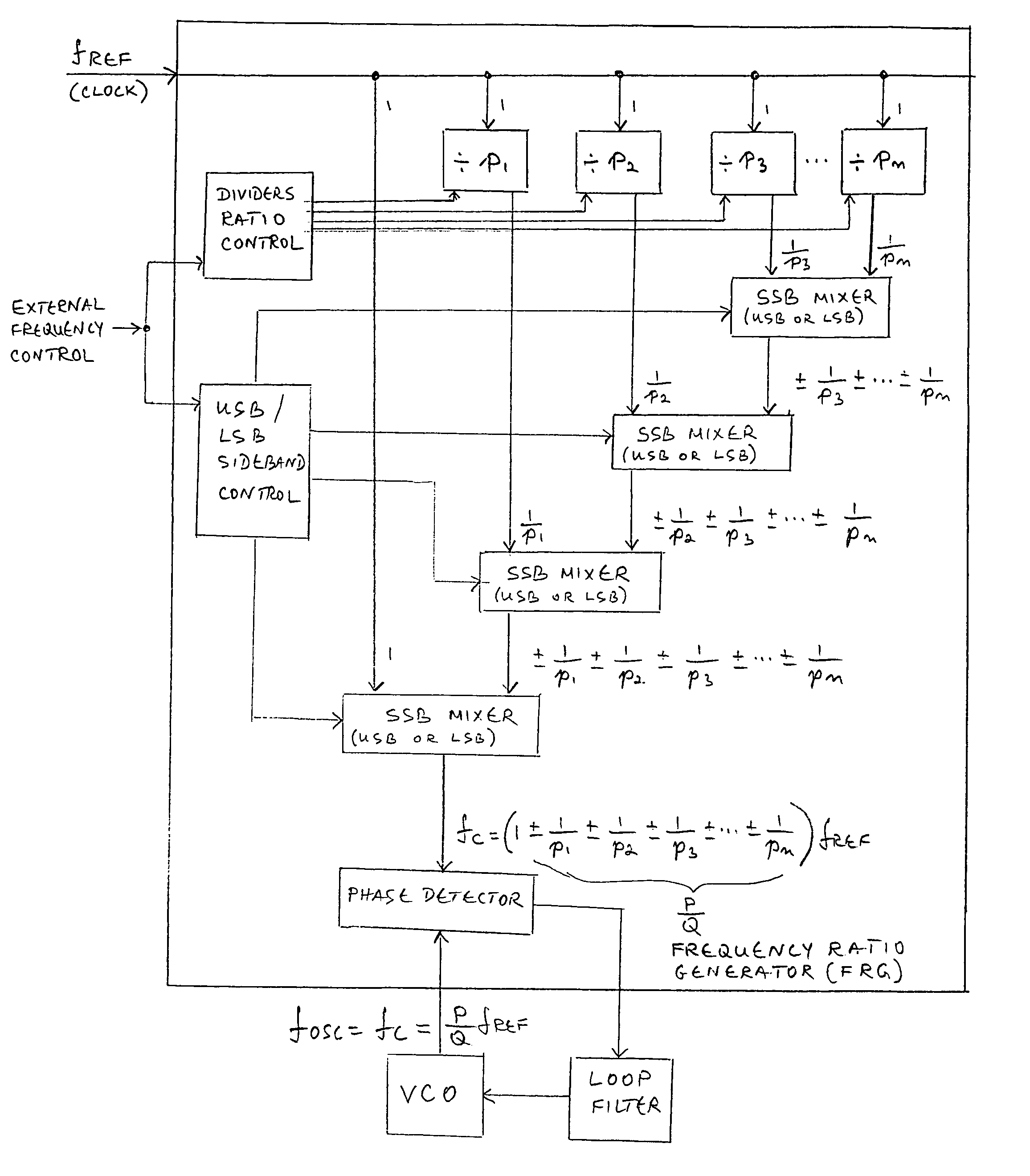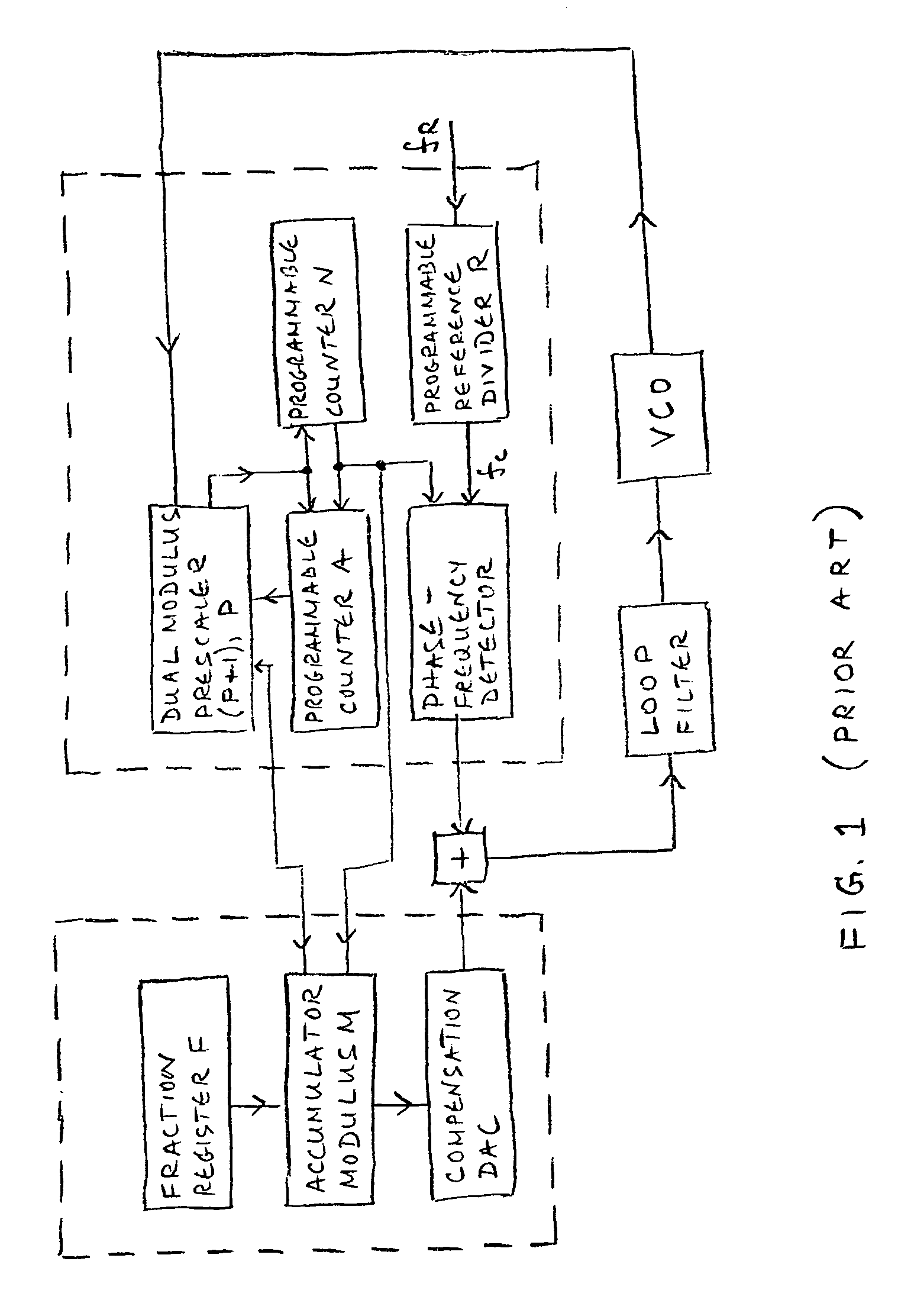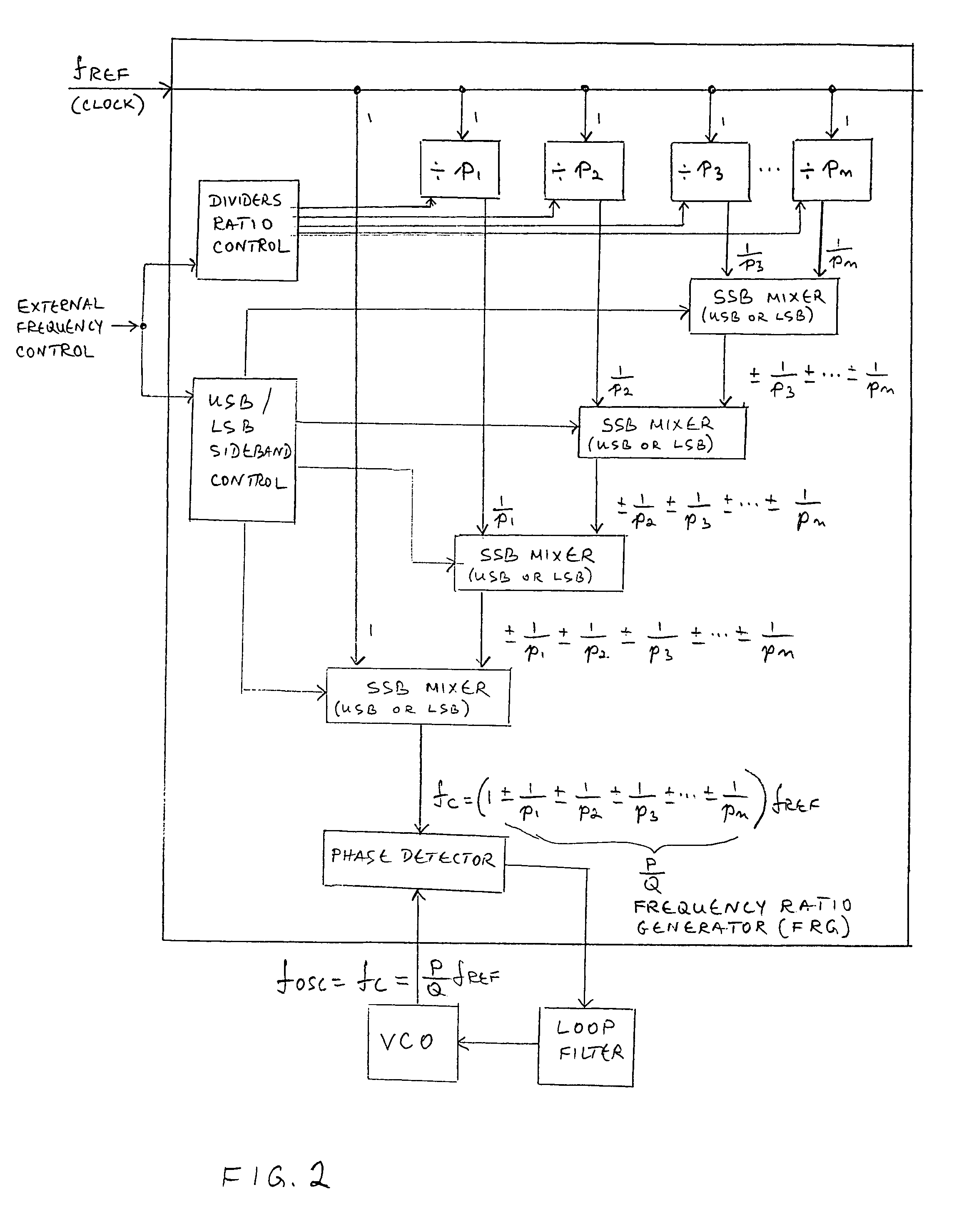As is well known in the art, excessive
phase noise of the sources used to process modulated signals that contain information in it's phase or frequency can cause degradation in
signal to
noise ratio (S / N) or
bit error rate (BER) of the desired
signal, resulting in reduced sensitivity and unsatisfactory
system performance.
In the systems with closely spaced channels, it is also possible that the LO phase
noise can cause degradation in sensitivity due to
adjacent channel interference, whereby the LO phase
noise side bands can in the
receiver down-convert the
adjacent channel and place it directly on the desired
signal and so cause interference, or in the case of a
transmitter LO, the transmitted LO phase noise
side band occurring at the
adjacent channel frequency can cause direct interference in the receivers tuned to that adjacent channel frequency.
As is well known in the art, the discrete spurious sidebands of the synthesized signal are none less important than the random phase noise sidebands, since they can cause similar, and in many cases even worse undesired effects.
DDS—very good noise and close-in
spectral purity performance,
fast switching with continuous phase capability, excellent agility but limited
frequency coverage (currently at about 100 MHz practical implementation limit), medium to high cost (increases with frequency), could be used in limited number of high volume applications.
This noise is added to the phase noise of the reference signal.
As will be shown later, this noise multiplication is often the key factor causing degradation of phase noise performance in synthesizers.
Since programmable counters have limitations in terms of the upper frequency limit where they can operate, often prescalers are used to scale the oscillator frequency down and bring it within the operational frequency range of the programmable counters.
As is well documented in the literature related to the art, the primary cause of phase noise at the output of the synthesized oscillators s the combination of the residual VCO phase noise (the portion of the oscillator noise that is not rejected by the loop), and the
noise power of the loop components (such as dividers and phase detectors).
In the case of relatively low comparison frequency fc and relatively high oscillator frequency fosc, the 20·log(Ntot) figure can amount to a very large quantity, exceeding the residual VCO phase noise and thus becoming a dominant and
limiting factor in the ultimate noise performance achievable in the
system.
The noise
gain of this magnitude can place severe limitations as to the achievable phase noise performance in the
system, such as in the above two examples.
Another
adverse effect of low comparison frequency indirectly affects the switching speed.
While in this way the switching speed is improved, the oscillator noise rejection remains poor with narrow LBW.
Another
adverse effect associated with narrow LBW is related to
phase modulation of the oscillator due to mechanical shock or vibration (referred to as microphonics).
In general,
mechanical vibration can cause parametric modulation of various components of a PLL (such as varactor diodes, inductors, etc.), which can result in
phase modulation of the oscillator.
The loop will reject the spectral energy of the
mechanical vibration within the LBW, but outside the LBW, the loop will not be able to protect the oscillator of being phase modulated by the vibration.
Clearly, the limitation of this type of the synthesizer only aggravates the issues discussed above, and in many applications it can not provide the satisfactory performance.
This
error signal needs to be completely removed from the loop, otherwise severe
phase modulation of the oscillator would occur (it can be shown that the accumulated
phase error in one complete fractional cycle amounts to 360° at the oscillator frequency).
Although it is achievable in the state of the art FNS ICs, it is often difficult to maintain this kind of precision over wide frequency range and temperature range since both the compensation DAC and PFD will exhibit some variations due to these factors.
For wide tuning range oscillators, it is often necessary to provide an external adjustment for the compensation current of the DACs in the application circuit (outside of the IC), which may complicate the manufacturing process.
Due to these factors, the ultimate
phase error compensation is limited, and to ensure sufficient
spectral purity of the oscillator, the
loop filter often must be called upon to assist in further reduction of the sidebands, resulting in the LBW having a
cut-off much below the fc / M, i.e. much below the step increment frequency.
The reduced LBW, as mention earlier may adversely affect both the switching speed and the rejection of the internal oscillator phase noise.
Finally, it should be mentioned that all of the above discussed prior art synthesizers use a phase-frequency
detector which is inherently limited in speed.
The
propagation delay and set-up and hold times of this circuit limits the maximum speed (or frequency) of the PFD operation.
 Login to View More
Login to View More  Login to View More
Login to View More 


